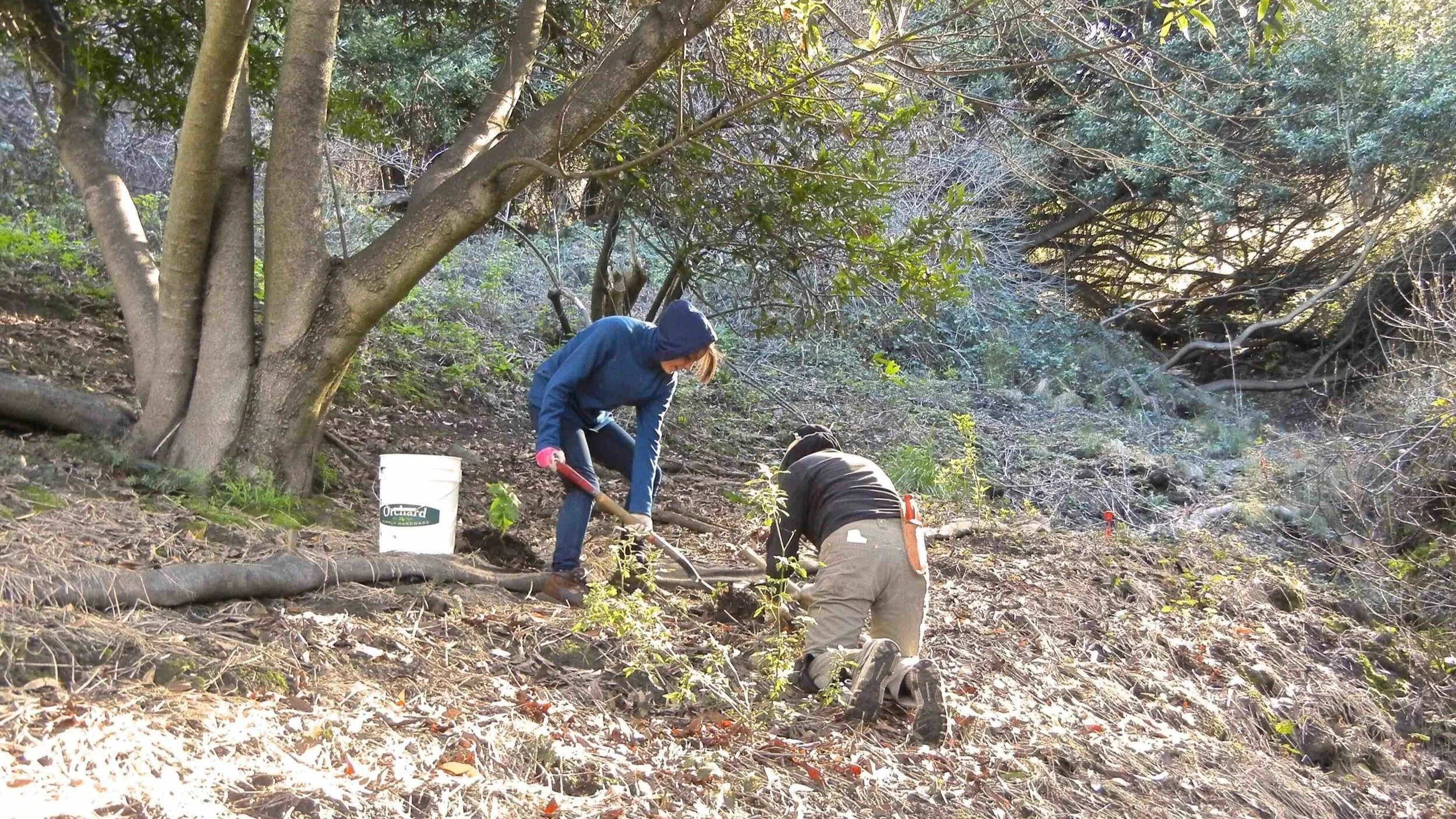With thanks to Tom Klatt we now have a new trail marker where the Gwin Canyon Trail meets the Willow Trail just down the steps from Signpost 29. We installed the trail marker during our January stewardship day. We are hopeful that the Park District will add a trail sign of their own at the other end of the Gwin Canyon Trail where it meets Norfolk Road. Conservancy volunteers continue their work to make the trail easier to traverse by installing more steps and water bars and making a part of the trail less steep. We also will be installing logs along the edge to reduce erosion. Finally, the University has just improved the area just outside the gate at Signpost 29, making it safer to pull over and park.
An Invitation to burn, by Tamia Marg
The Claremont Canyon landscape and its uses have changed dramatically over the last century. From the 1800's through the first few decades of the 20th century, the East Bay hills were primarily grasslands with trees and brush growing only in canyon draws. Much of Gwin Canyon, a tributary on the south side of Claremont Canyon, was planted with Monterey Pines (Pinus radiata), a widely established practice in the hills to beautify the land for housing developments in the early Twentieth Century. That these trees were fast-growing tinder in the landscape became evident after every subsequent hill wildfire.



